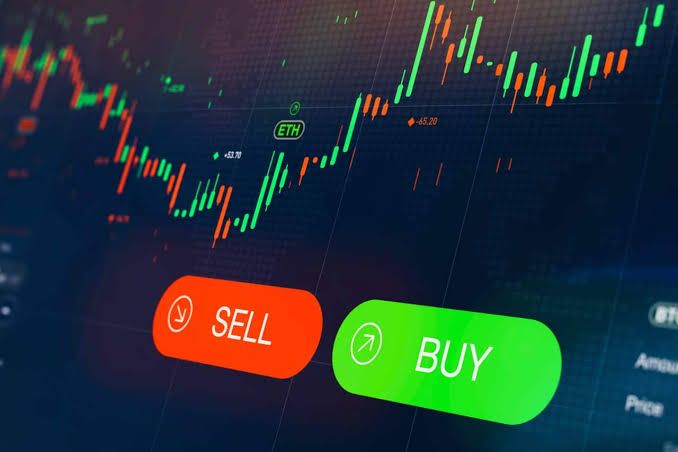
I can rightly say that all of us on this platform are cryptocurrency traders and that is because we all own cryptocurrencies in the form of Steem, TRX, and SBD.
In as much as we can be regarded as cryptocurrency traders, we can't be categorized into day-traders unless we are participating in day trading and that is what we will be looking at on this content.
Day trading is a trading strategy in which open trades ain't allowed to stay overnight. This approach is also known as intraday trading because the trading takes place within the same day. Day traders attempt to profit from price swings in a financial instrument by employing intraday trading tactics.
The phrase "day trader" comes from the stock market, which only trades on business days. Day traders never leave positions open overnight in this scenario since they want to profit from intraday price fluctuations.

Day traders that are successful will have a thorough comprehension of the market as well as a substantial amount of experience. To generate trade ideas, day traders frequently employ technical analysis (TA). To choose entry and exit locations for trades, they will typically analyze volume, price activity, chart patterns, and technical indicators. Risk management is critical to day trading success, as it is to any trading technique.
Day traders might not be concerned with fundamental analysis because fundamental events might take a long time to unfold (FA). Despite this, some day traders use "trading the news" as part of their strategy. This entails locating high-volume assets as a result of a recent statement or piece of news and profiting on the brief increase in trading activity.
The goal of day traders is to make money by exploiting market volatility. Day trading requires a lot of volume and liquidity. Day traders, after all, require a lot of liquidity in order to execute fast trades. When it comes to departing a position, this is especially true. A day trader's trading account can be ruined by a significant slippage on just one trade. Day traders like to trade extremely liquid market pairs because of this.

- SCALPING
Day traders frequently use the scalping approach. It entails profiting from minor price movements that occur over short time periods. Liquidity gaps, bid-ask spreads, and other market inefficiencies are examples of these.
Scalpers frequently use margin or futures contracts to boost their profits. Larger position sizes make sense because the percentage price targets are typically smaller. In fact, most day trading methods are based on this principle.
- RANGE TRADING
Range trading is a straightforward approach that largely relies on candlestick chart interpretation and the identification of support and resistance levels. Range traders, as the name implies, look for price ranges within the market structure and develop trade ideas based on them. A range trader, for example, could buy the support level and sell the resistance level if the price is ranging between them. They may, on the other hand, short the resistance level and leave at the support.
The premise behind range trading is that the range's boundaries will act as support and resistance until the range is broken. This indicates that the lower end of the range will likely drive the price higher, while the upper end will likely drive the price lower.
- HIGH FREQUENCY TRADING
Quantitative traders often utilize high-frequency trading as an algorithmic trading approach ("quant" traders). It entails creating trading bots and algorithms that can quickly enter and exit a large number of trades in a short period of time. What is the length of these deadlines? Milliseconds come to mind. For a high-frequency trading firm, a few milliseconds of advantage can mean a huge advantage over competing firms.
Highly sophisticated strategies may be implemented using HFT algorithms. While high-frequency trading may appear to be a simple day trading method, it is far more complex than it appears. Backtesting, monitoring, and modifying algorithms are all part of high-frequency trading to respond to ever-changing market conditions. So, if you think you can sit back and let a trading bot do all the work for you, you're usually mistaken.

Day trading can be a lucrative approach, but there are a few factors to consider before getting started. Because day trading necessitates quick decision-making and execution, it may be extremely stressful and demanding. Day trading can be dangerous and necessitates a thorough understanding of the market. It will, of course, necessitate extended durations of staring at displays.
Are you able to carry all of this weight on your shoulders while also risking financial loss? You'll have to think about if day trading is a good fit for your investment goals and personality.

Cryptocurrency trading has grown to be common among cryptocurrency enthusiasts and that has indeed increased thd cryptocurrency adoption. Many venture unto cryptocurrency trading without properly understanding the concepts, factors, and risks involved. This has led many into making uncontrollable losses which is why it is necessary to properly understand cryptocurrency trading before venturing into cryptocurrency trading.
Hi, @srrebullient,
Thank you for your contribution to the Blurt ecosystem.
Your post was picked for curation by @onchain-curator.
Please consider voting for our Upkeep Proposal by Symbionts.